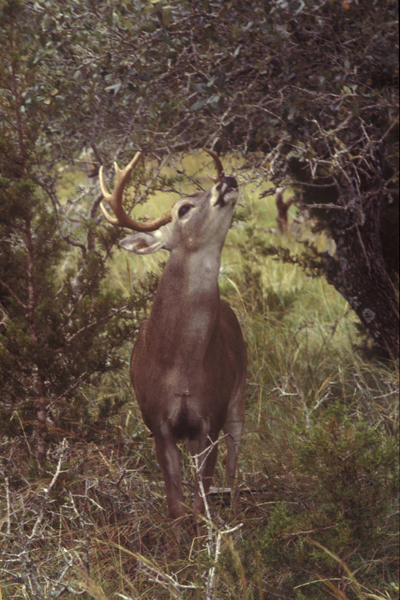
by John Jefferson
Last year, I crammed the entire deer forecast into one column. That was a mistake. This year, there are more deer in Texas and more to write about, so I’ll take two weeks to cover it. This week’s column will include the central and northwestern parts of Texas; next week’s will cover the rest.
This is arbitrary but should provide better information. If you’re looking for an overall forecast, Texas white-tailed deer population has grown to an estimated 5.4 million deer from the previous estimate of four million! Improved survey practices combined with Nature have increased the total.
Remember last fall? It rained out much of the dove season last September (2018) and it kept raining through the fall. According to Alan Cain, TPWD’s White-tailed Deer Program Leader, winter weeds flourished into the spring, replenishing body reserves lost through the rigorous breeding season and normally stressful winter. Wet weather continued into early summer.
That did two things. First, the rains and consequent weedy nutrition came at the right time to aid antler development, which should be ABOVE average. And, secondly, all the attendant cover should mean high fawn survival. Cain expects survival over 50%. It’s usually around 40%.
Texas suffered through one of the hottest late summers on record, but, fortunately, conditions leading up to the prolonged heat wave somewhat mitigated its effects.
This first part of the forecast will include the Edwards Plateau, the Rolling Plains (eastern) and the High Plains (western) of West Texas. I’ve entitled this the West Texas Deer Forecast, but those familiar with Texas geography know the Edwards Plateau – AKA the Hill Country – begins along the Balcones Fault in Central Texas, west of I-35.
The Hill Country is over-loaded with whitetails. Roughly 2.4 million — more than any ecoregion in Texas, more than in any part America. It also hosts more hunters. And hunter success runs high – about 78%. It has suffered an overpopulation of deer dating back to the eradication of the screw worm in the late ‘50s, and the population is female-heavy due to years of protecting does, coupled with hunters’ preference for taking bucks. Cain and TPWD urge hunters to take as many does as possible to relieve pressure on the habitat.
Deer density varies across the region from 293 deer per 1,000 acres to 42 per 1,000 acres the farther west you go. Areas in Mason and Llano counties have the highest density. The 2013 fawn crop has matured and should provide more 6.5-year-old bucks this fall. Older bucks are expected from Del Rio to Junction to Ozona and north of Highway 90 between Hondo and Del Rio.
The eastern and western Rolling Plains have the lowest deer populations due to low annual rainfall and vegetation. But quality-wise, Cain suggests hunters looking for mature bucks should consider this region. Hunter success has been higher in the eastern portion. Large ranches, light hunting pressure and wise management have made this area famous for large bucks.
Next week – South Texas, Cross Timbers and more.
JJ




